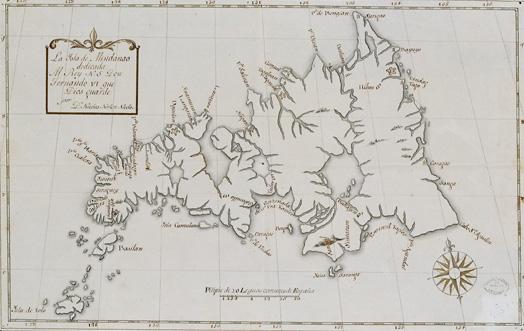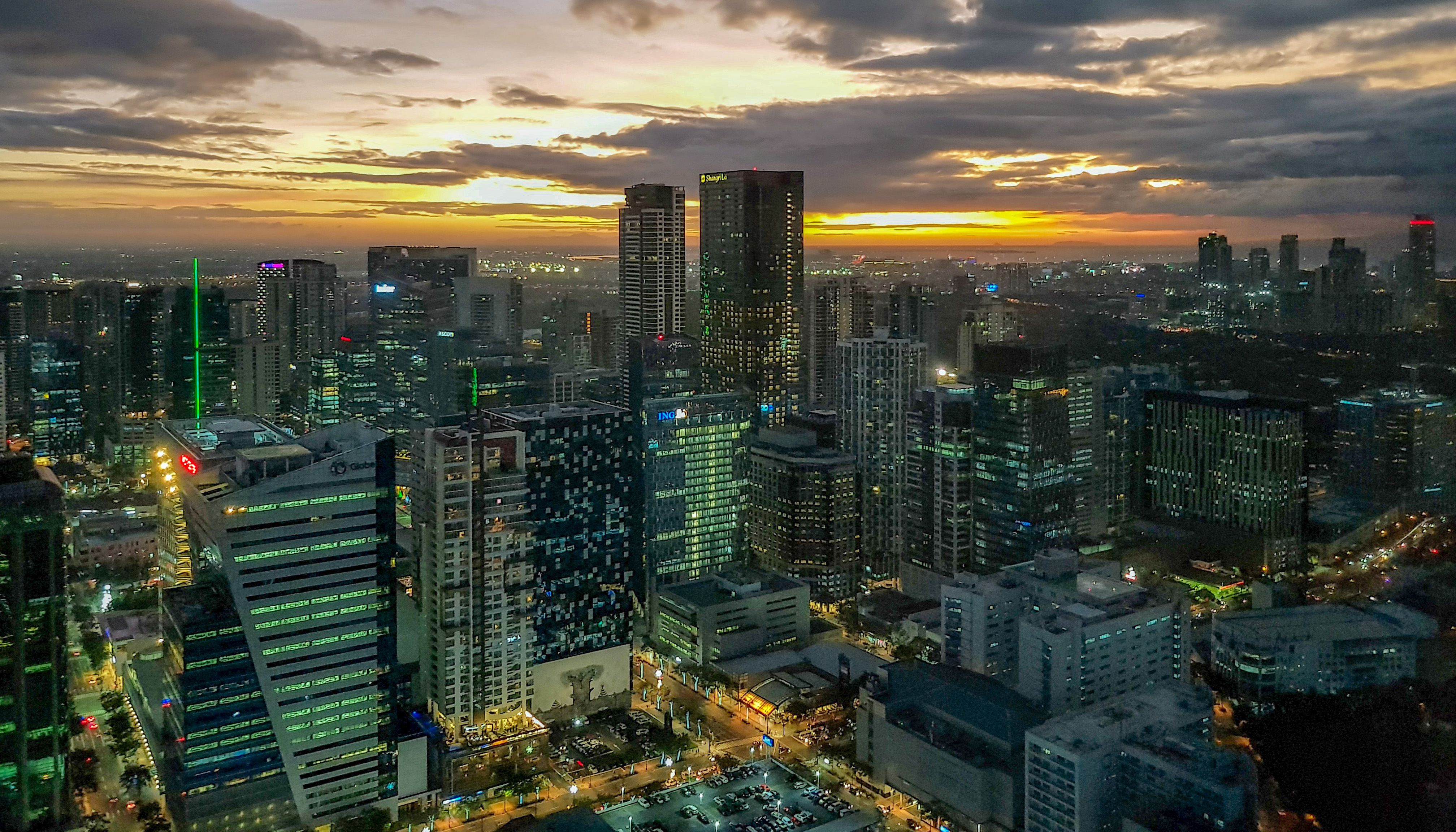|
Tagum
Tagum, officially the City of Tagum (; ), is a Cities of the Philippines#Legal classification, component city and capital of the Davao del Norte, Philippines. According to the 2020 census, it has a population of 296,202, making it the most populous Cities of the Philippines, component city in Mindanao and in Davao del Norte, as well as the second most populous in Davao Region after Davao City. It is one of the topmost livable cities in the Philippines, and was one of the finalists in the most child-friendly city in the Philippines – component category along with Laoag, and Talisay, Cebu. In the 2021 Cities and Municipalities Competitiveness Index (CMCI), the city of Tagum ranked third on the overall competitive component cities in the Philippines, fourth on infrastructure, second in resiliency, thirteenth on economic dynamism and first on government efficiency. Etymology There is no official record as to the origin and meaning of the name Tagum, but in Visayan language ... [...More Info...] [...Related Items...] OR: [Wikipedia] [Google] [Baidu] |
Davao Del Norte
Davao del Norte (; ), officially the Province of Davao del Norte (; ), is a Provinces of the Philippines, province in the Philippines located in the Davao Region in Mindanao. Its capital and largest city is Tagum. The province also includes Samal Island to the south in Davao Gulf. Before 1967, the five provinces—Davao de Oro, Davao del Norte, Davao del Sur, Davao Occidental, Davao Oriental—and Guipuzcoa were administered as a single province named Davao (province), Davao, a provincial district of the Department of Mindanao and Sulu. The present-day Davao Region is coterminous with this former province. Davao del Norte is also known as "The Banana Capital of the Philippines." History Establishment Davao del Norte and Davao de Oro (Compostela Valley) by R.A. 8470, January 30, 1998, together with Davao Oriental, and Davao Occidental from Davao del Sur by R.A. 10360, January 14, 2013, used to be a whole province simply known as Davao (province), Davao Region. This origina ... [...More Info...] [...Related Items...] OR: [Wikipedia] [Google] [Baidu] |
Mindanao
Mindanao ( ) is the List of islands of the Philippines, second-largest island in the Philippines, after Luzon, and List of islands by population, seventh-most populous island in the world. Located in the southern region of the archipelago, the island is part of an island group of the same name that also includes its adjacent islands, notably the Sulu Archipelago. According to the 2020 census, Mindanao had a population of 26,252,442, while the entire island group had an estimated population of 27,021,036. Mindanao is divided into six administrative regions: the Zamboanga Peninsula, Northern Mindanao, the Caraga region, the Davao Region, Davao region, Soccsksargen, and the autonomous region of Bangsamoro. According to the 2020 census, Davao City is the most populous city on the island, with 1,776,949 people, followed by Zamboanga City (pop. 977,234), Cagayan de Oro (pop. 728,402), General Santos (pop. 697,315), Butuan (pop. 372,910), Iligan (pop. 363,115) and Cotabato City (pop. ... [...More Info...] [...Related Items...] OR: [Wikipedia] [Google] [Baidu] |
Provinces Of The Philippines
In the Philippines, provinces ( or ) are one of its primary political and administrative divisions of the Philippines, administrative divisions. There are 82 provinces at present, which are further subdivided into Cities of the Philippines, component cities and Municipalities of the Philippines, municipalities. The local government units in the Metro Manila, National Capital Region, as well as Cities of the Philippines#Independent cities, independent cities, are independent of any provincial government. Each province is governed by an elected legislature called the Sangguniang Panlalawigan and an elected governor. The provinces are grouped into Regions of the Philippines, eighteen regions based on geographical, cultural, and ethnological characteristics. Thirteen of these regions are numerically designated from north to south, while the National Capital Region, the Cordillera Administrative Region, the Southwestern Tagalog Region (Mimaropa), the Negros Island Region, and the Ba ... [...More Info...] [...Related Items...] OR: [Wikipedia] [Google] [Baidu] |
List Of Electric Distribution Utilities In The Philippines
This is a complete list of electric utilities in the Philippines. There are 152 electric utilities in the Philippines, country. List See also * List of companies of the Philippines * List of power plants in the Philippines Notes References External links Distribution Utility (DU) Profile {{Authority control Electric cooperatives of the Philippines, Electric power companies of the Philippines, Lists of companies of the Philippines, Electric Electric power-related lists, Philippines Lists of energy companies, Philippines ... [...More Info...] [...Related Items...] OR: [Wikipedia] [Google] [Baidu] |
Sangguniang Panlungsod
The Sangguniang Panlungsod (SP) is the local legislature, legislative body of a Philippine city, city government in the Philippines. The name of the legislative body comes from the Filipino language, Filipino words "''sanggunian''" ("council") – ultimately from the root word "''sangguni''" ("to consult") – both of Tagalog language, Tagalog origins, with the latter word also of Kapampangan language, Kapampangan and Old Tagalog origins, and "''lungsod''" ("city") of both Tagalog language, Tagalog ("lungsod" = "city") – but ultimately Visayan language, Bisayan ("lungsod" = town or municipality) – origins; "city council" is therefore often used as an equivalent term in English language, English or Philippine English. Members of the city council are referred to as "''kagawad''"; while in mostly but not only predominantly Bisayan-speaking cities, they are called "''konsehal''" (masc.) and "''konsehala''" (fem.), or "''sehal''". The Local Government Code of 1991 governs the compo ... [...More Info...] [...Related Items...] OR: [Wikipedia] [Google] [Baidu] |
Economy Of The Philippines
The economy of the Philippines is an emerging market, and considered as a newly industrialized country in the Asia-Pacific region. In 2025, the Philippine economy is estimated to be at ₱28.50 trillion ($497.5 billion), making it the world's List of countries by GDP (nominal), 32nd largest by nominal GDP and Economy of Asia, 9th largest in Asia according to the International Monetary Fund. The Philippine economy is a service-oriented economy, with relatively more modest contributions from the manufacturing and agriculture sectors. It has experienced significant economic growth and transformation in the past, posting one of the highest GDP growth rates in Asia. With an average annual growth rate of around 6 percent since 2010, the country has emerged as one of the fastest-growing economies in the world. The Philippines is a founding member of the United Nations, Association of Southeast Asian Nations, Asia-Pacific Economic Cooperation, East Asia Summit and the World Trade Organ ... [...More Info...] [...Related Items...] OR: [Wikipedia] [Google] [Baidu] |
Philippines
The Philippines, officially the Republic of the Philippines, is an Archipelagic state, archipelagic country in Southeast Asia. Located in the western Pacific Ocean, it consists of List of islands of the Philippines, 7,641 islands, with a total area of roughly 300,000 square kilometers, which are broadly categorized in Island groups of the Philippines, three main geographical divisions from north to south: Luzon, Visayas, and Mindanao. With a population of over 110 million, it is the world's List of countries and dependencies by population, twelfth-most-populous country. The Philippines is bounded by the South China Sea to the west, the Philippine Sea to the east, and the Celebes Sea to the south. It shares maritime borders with Taiwan to the north, Japan to the northeast, Palau to the east and southeast, Indonesia to the south, Malaysia to the southwest, Vietnam to the west, and China to the northwest. It has Ethnic groups in the Philippines, diverse ethnicities and Culture o ... [...More Info...] [...Related Items...] OR: [Wikipedia] [Google] [Baidu] |
Cities Of The Philippines
A city ( or ) is one of the units of local government in the Philippines. All Philippine cities are chartered cities (Filipino: ), whose existence as corporate and administrative entities is governed by their own specific municipal charters in addition to the Local Government Code of 1991, which specifies their administrative structure and powers. As of July 8, 2023, there are 149 cities. A city is entitled to at least one representative in the House of Representatives of the Philippines, House of Representatives if its population reaches 250,000. Cities are allowed to use a common seal. As corporate entities, cities have the power to take, purchase, receive, hold, lease, convey, and dispose of real and personal property for their general interests; condemn private property for public use (eminent domain); contract and be contracted with; sue; and exercise all powers conferred on them by Congress. Only an List of Philippine laws, act of Congress can create or amend a city charter ... [...More Info...] [...Related Items...] OR: [Wikipedia] [Google] [Baidu] |
Crime Index
Crime statistics refer to systematic, quantitative results about crime, as opposed to crime news or anecdotes. Notably, crime statistics can be the result of two rather different processes: * scientific research, such as criminological studies, victimisation surveys; * official figures, such as published by the police, prosecution, courts, and prisons. However, in their research, criminologists often draw on official figures as well. Methods There are several methods for the measuring of crime. Public surveys are occasionally conducted to estimate the amount of crime that has not been reported to police. Such surveys are usually more reliable for assessing trends. However, they also have their limitations and generally don't procure statistics useful for local crime prevention, often ignore offenses against children and do not count offenders brought before the criminal justice system. Law enforcement agencies in some countries offer compilations of statistics for various types ... [...More Info...] [...Related Items...] OR: [Wikipedia] [Google] [Baidu] |
Languages Of The Philippines
There are some 130 to 195 languages spoken in the Philippines, depending on the method of classification. Almost all are Malayo-Polynesian languages native to the archipelago. A number of Spanish-influenced creole language, creole varieties generally called Chavacano along with some local varieties of Chinese are also spoken in certain communities. The 1987 constitution designates Filipino language, Filipino, a de facto standardized version of Tagalog language, Tagalog, as the national language and an official language along with English language, English. Filipino is regulated by Commission on the Filipino Language and serves as a ''lingua franca'' used by Filipinos of various ethnolinguistic backgrounds. Republic Act 11106 declares Filipino Sign Language or FSL as the country's official sign language and as the Philippine government's official language in communicating with the Filipino Deaf. While Filipino is used for communication across the country's diverse linguistic gr ... [...More Info...] [...Related Items...] OR: [Wikipedia] [Google] [Baidu] |
Liability (financial Accounting)
In financial accounting, a liability is a quantity of value that a financial entity owes. More technically, it is value that an entity is expected to deliver in the future to satisfy a present obligation arising from past events. The value delivered to settle a liability may be in the form of assets transferred or services performed. Characteristics A liability is defined by the following characteristics: * Any type of borrowing from persons or banks for improving a business or personal income that is payable during short or long time; * A duty or responsibility to others that entails settlement by future transfer or use of assets, provision of services, or other transaction yielding an economic benefit, at a specified or determinable date, on occurrence of a specified event, or on demand; * A duty or responsibility that obligates the entity to another, leaving it little or no discretion to avoid settlement; and, * A transaction or event obligating the entity that has already occ ... [...More Info...] [...Related Items...] OR: [Wikipedia] [Google] [Baidu] |
Expenditure
An expense is an item requiring an outflow of money, or any form of fortune in general, to another person or group as payment for an item, service, or other category of costs. For a tenant, rent is an expense. For students or parents, tuition is an expense. Buying food, clothing, furniture, or an automobile is often referred to as an expense. An expense is a cost that is "paid" or " remitted", usually in exchange for something of value. Something that seems to cost a great deal is "expensive". Something that seems to cost little is "inexpensive". "Expenses of the table" are expenses for dining, refreshments, a feast, etc. In accounting, ''expense'' is any specific outflow of cash or other valuable assets from a person or company to another person or company. This outflow is generally one side of a trade for products or services that have equal or better current or future value to the buyer than to the seller. Technically, an expense is an event in which a proprietary stake is di ... [...More Info...] [...Related Items...] OR: [Wikipedia] [Google] [Baidu] |




